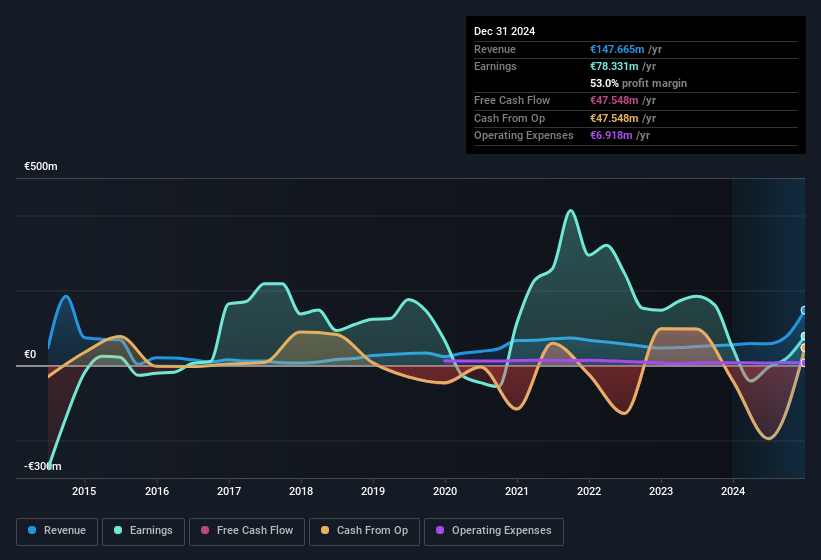Solid Earnings May Not Tell The Whole Story For CPI FIM (BDL:ORCL)
The market shrugged off CPI FIM SA's (BDL:ORCL) solid earnings report. Our analysis showed that there are some concerning factors in the earnings that investors may be cautious of.

The Power Of Non-Operating Revenue
Most companies divide classify their revenue as either 'operating revenue', which comes from normal operations, and other revenue, which could include government grants, for example. Where possible, we prefer rely on operating revenue to get a better understanding of how the business is functioning. However, we note that when non-operating revenue increases suddenly, it will sometimes generate an unsustainable boost to profit. It's worth noting that CPI FIM saw a big increase in non-operating revenue over the last year. In fact, our data indicates that non-operating revenue increased from €19.3m to €91.3m. The high levels of non-operating revenue are problematic because if (and when) they do not repeat, then overall revenue (and profitability) of the firm will fall. In order to better understand a company's profit result, it can sometimes help to consider whether the result would be very different without a sudden increase in non-operating revenue.
Note: we always recommend investors check balance sheet strength. Click here to be taken to our balance sheet analysis of CPI FIM .
The Impact Of Unusual Items On Profit
On top of the non-operating revenue spike, we should also consider the €24m impact of unusual items in the last year, which had the effect of suppressing profit. While deductions due to unusual items are disappointing in the first instance, there is a silver lining. We looked at thousands of listed companies and found that unusual items are very often one-off in nature. And that's hardly a surprise given these line items are considered unusual. In the twelve months to December 2024, CPI FIM had a big unusual items expense. As a result, we can surmise that the unusual items made its statutory profit significantly weaker than it would otherwise be.
Our Take On CPI FIM's Profit Performance
In its last report CPI FIM benefitted from a spike in non-operating revenue which may have boosted its profit in a way that may be no more sustainable than low quality coal mining. Having said that, it also took a hit from unusual items, which could bode well for next year, assuming the expense was one-off in nature. Given the contrasting considerations, we don't have a strong view as to whether CPI FIM's profits are an apt reflection of its underlying potential for profit. If you want to do dive deeper into CPI FIM, you'd also look into what risks it is currently facing. For instance, we've identified 4 warning signs for CPI FIM (2 don't sit too well with us) you should be familiar with.
In this article we've looked at a number of factors that can impair the utility of profit numbers, as a guide to a business. But there are plenty of other ways to inform your opinion of a company. For example, many people consider a high return on equity as an indication of favorable business economics, while others like to 'follow the money' and search out stocks that insiders are buying. So you may wish to see this free collection of companies boasting high return on equity, or this list of stocks with high insider ownership.
Have feedback on this article? Concerned about the content? Get in touch with us directly. Alternatively, email editorial-team (at) simplywallst.com.
This article by Simply Wall St is general in nature. We provide commentary based on historical data and analyst forecasts only using an unbiased methodology and our articles are not intended to be financial advice. It does not constitute a recommendation to buy or sell any stock, and does not take account of your objectives, or your financial situation. We aim to bring you long-term focused analysis driven by fundamental data. Note that our analysis may not factor in the latest price-sensitive company announcements or qualitative material. Simply Wall St has no position in any stocks mentioned.
 Wall Street Journal
Wall Street Journal